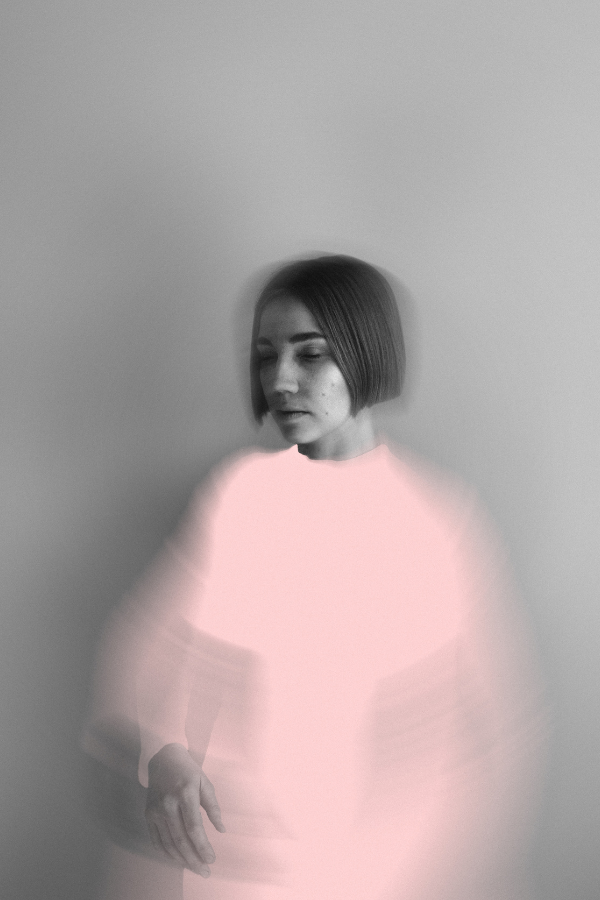

French Female Artist Rosa Bonheur Elevated Animalière
Summary
Reflection Questions
Journal Prompt
Rosa Bonheur, a distinguished female artist of the 19th century, carved a unique niche in the art world with her exceptional contributions to the animalière genre. Her work, characterized by extraordinary realism and vitality in depicting animals, elevated this genre to new heights of recognition and esteem. Bonheur not only mastered the intricacies of animal anatomy and behavior in her art but also boldly challenged the gender norms of her era. In an age where women artists often faced significant barriers, she emerged as a trailblazer, asserting her presence in the predominantly male-dominated art world. In this article, we will explore Bonheur’s life and legacy, underscoring her pivotal role in transforming both the artistic portrayal of animals and the role of women in the realm of fine arts. Read on to learn more about the famous female painter and her contributions to art history!
Early Life and Artistic Training
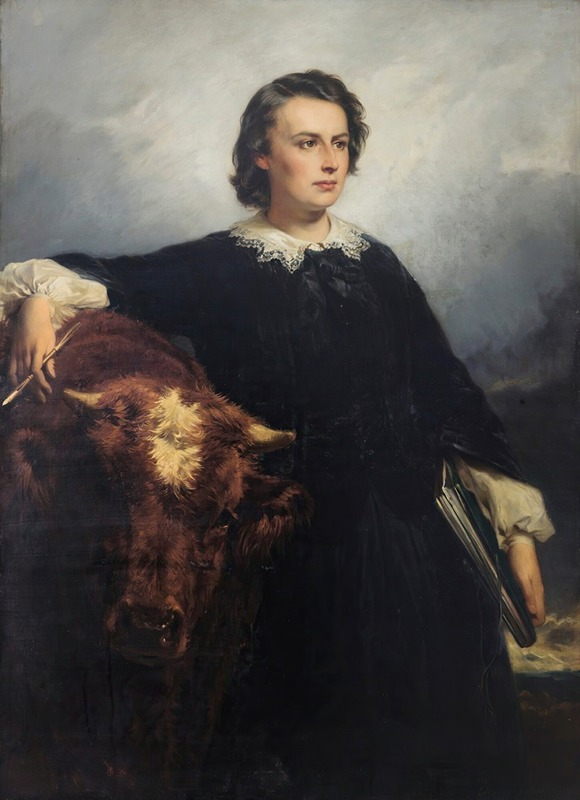

Rosa Bonheur was born on March 16, 1822, in Bordeaux, France, into a family deeply immersed in the arts. Her childhood was marked by a shifting socio-political landscape, which was to influence her later works profoundly. From a young age, Bonheur displayed an affinity for drawing and painting, often finding inspiration in the natural world.
Her family’s move to Paris when she was a child opened up more opportunities for exposure to the arts, though her formal education was frequently interrupted due to her family’s financial difficulties. These early experiences in Bordeaux and Paris laid the groundwork for her lifelong connection to and passion for the arts.
Influence of Her Father, Raymond Bonheur, and Her Early Artistic Development
Her father, Raymond Bonheur, was a landscape and portrait painter and was her initial teacher in art. He was responsible for much of her art educationHer siblings were also involved in the arts: her older brother, Auguste Bonheur, was a painter; her younger brother, Isidore Bonheur, became a well-known sculptor; and her youngest sibling, Juliette Bonheur, was also a painter and sculptor.
The Bonheur family was unique for their time in their collective involvement in the arts and their support for each other’s artistic pursuits. This artistic environment undoubtedly played a significant role in shaping Rosa’s development as an artist and her subsequent success.
Raymond’s progressive views on gender equality also meant that Rosa received the same rigorous training as her brothers, which was atypical for women at the time. Under her father’s tutelage, she developed a solid foundation in artistic techniques and an appreciation for the discipline required to succeed in the arts. Raymond’s guidance was pivotal in shaping Rosa’s early artistic style and her approach to the profession.
Discussion of the Socio-Cultural Environment of Her Time and Its Impact on Her Formative Years
The socio-cultural environment of early 19th-century France played a significant role in Bonheur’s formative years. This period in France was marked by political upheaval and a shifting social landscape, influencing artistic expression and public reception of the arts.
Women artists were especially marginalized in the professional art world, often restricted to certain genres considered appropriate for their gender. Despite these societal constraints, Bonheur’s upbringing in an environment that encouraged artistic exploration and gender equality allowed her to pursue her passion for painting.
This unique blend of personal encouragement and societal challenges during her early years was instrumental in forging her path as a groundbreaking female artist, setting the stage for her later defiance of conventional norms in both her personal life and professional career.
Fuel your creative fire & be a part of a supportive community that values how you love to live.
subscribe to our newsletter
Bonheur’s Artistic Influences
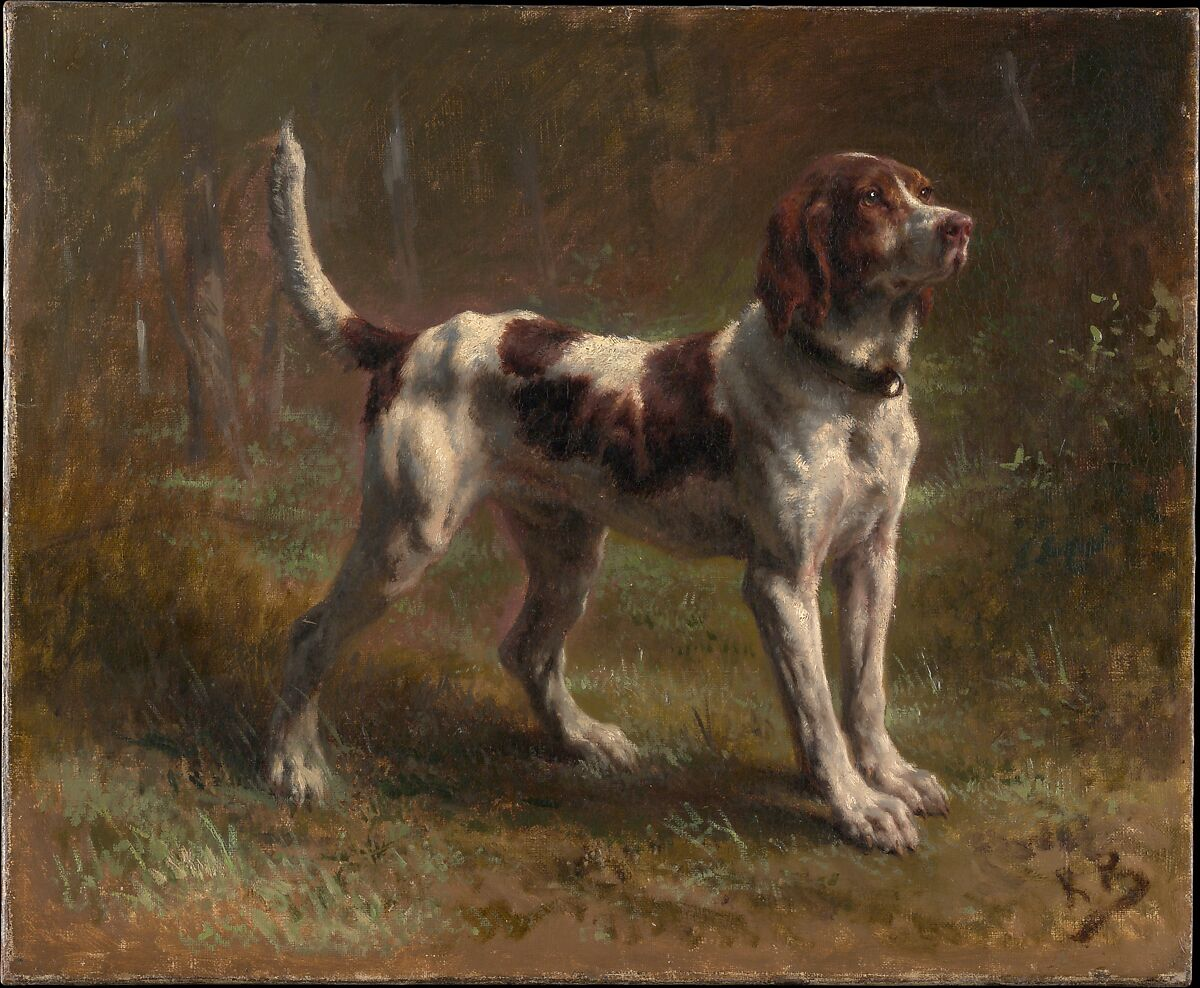

Rosa Bonheur’s artistic inspirations were deeply rooted in her love and admiration for the natural world, particularly animals. Several key sources of inspiration shaped her work and artistic vision, including the following.
Animal Life and Behavior
Bonheur had a profound interest in animals from a very early age. She spent considerable time observing them in various settings, including farms, markets, and the countryside. Her keen observation of animals in their natural habitats and in human care greatly influenced her portrayal of them in her art. She was particularly interested in capturing their movement, behavior, and anatomy with precision and realism.
Her Father’s Influence
Her father, Raymond Bonheur, was a significant influence on her artistic development. He was not only her teacher but also a mentor who encouraged her to pursue her passion for art. His teachings and guidance laid the foundation for her artistic techniques and her approach to subjects.
Naturalism in Art
Bonheur was inspired by the Naturalist movement in art, which emphasized observation and depiction of the natural world. This movement’s focus on realism and detail resonated with her artistic style and objectives.
Rural and Agricultural Life
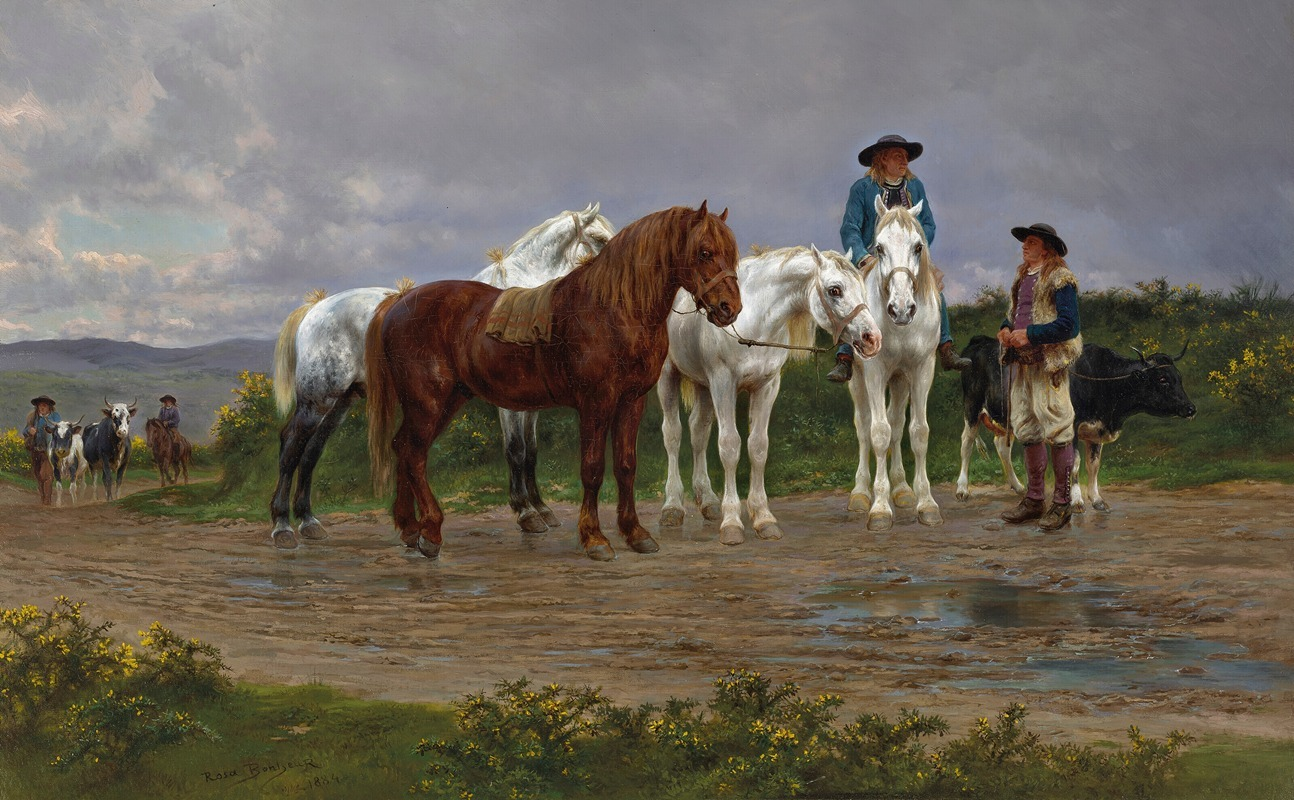

Much of Bonheur’s work reflects an inspiration drawn from rural life and agricultural practices. She was fascinated by the relationship between humans and animals. Bonheur captured many pastoral and farming scenes. Her upbringing and experiences in the French countryside contributed to this interest.
Classical Art Training
Her classical art training also played a role in shaping her style. She was trained in traditional drawing and painting techniques, which provided a strong technical foundation for her work.
Social and Political Climate
The social and political environment of 19th-century France, particularly regarding gender roles and expectations, also influenced her. Her choice to often portray traditionally ‘masculine’ subjects and her defiance of gender norms in both her personal and professional life were in part a response to the societal context of her time.
Travel and Exposure to Different Cultures
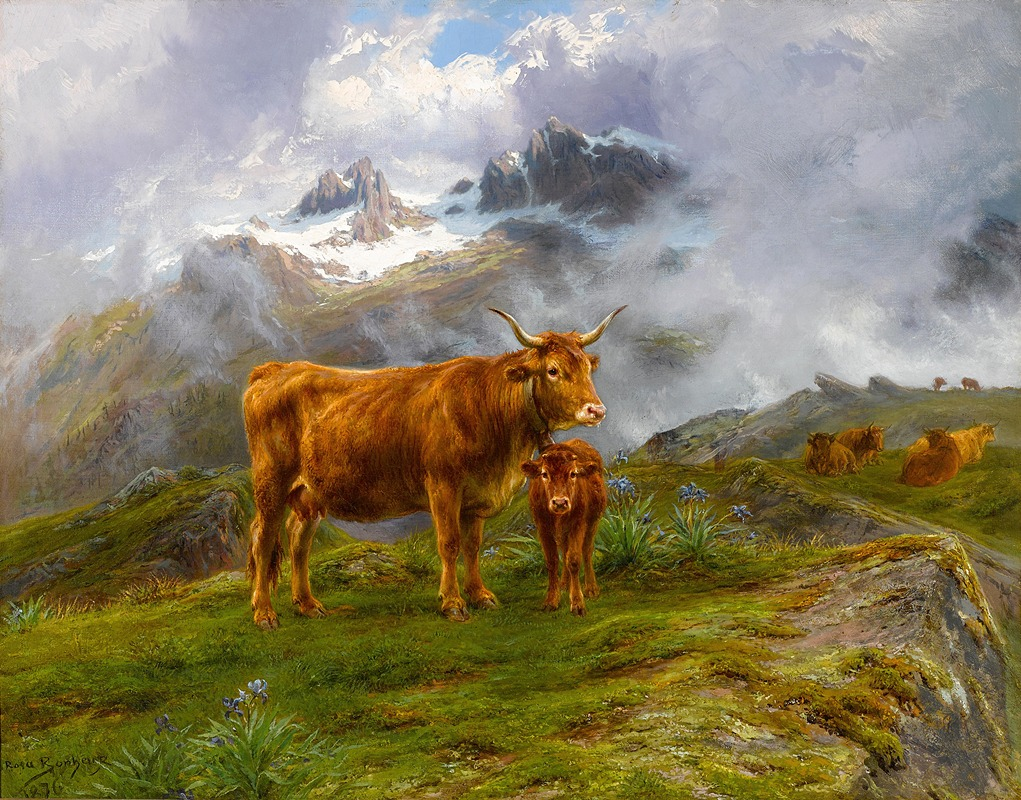

Bonheur’s travels, particularly in later years, exposed her to different landscapes and animal breeds, broadening her range of subjects and adding diversity to her work.
Overall, the artist drew inspiration from her natural surroundings, personal experiences, and the broader artistic and cultural movements of her time, all of which contributed to her unique approach to art and her success as an animalière painter.
Bonheur’s Rise to Fame
Rosa Bonheur’s ascent in the French art scene was marked by a steady progression, characterized by her unwavering commitment to her craft and a distinctive approach to animal painting. Initially, she experienced moderate success with her animal and landscape paintings, which were well-received in various Paris Salons.
Her early works, marked by precision and a keen observation of nature, gradually garnered attention and respect from both critics at the Paris Salon and the public. This recognition was significant, as it came at a time when the art world was predominantly male-dominated, with limited opportunities for women.
Bonheur’s perseverance and dedication to her art not only earned her acclaim but also helped pave the way for other women artists in the field.
Analysis of “Ploughing in the Nivernais” (1849) as a Breakthrough Work
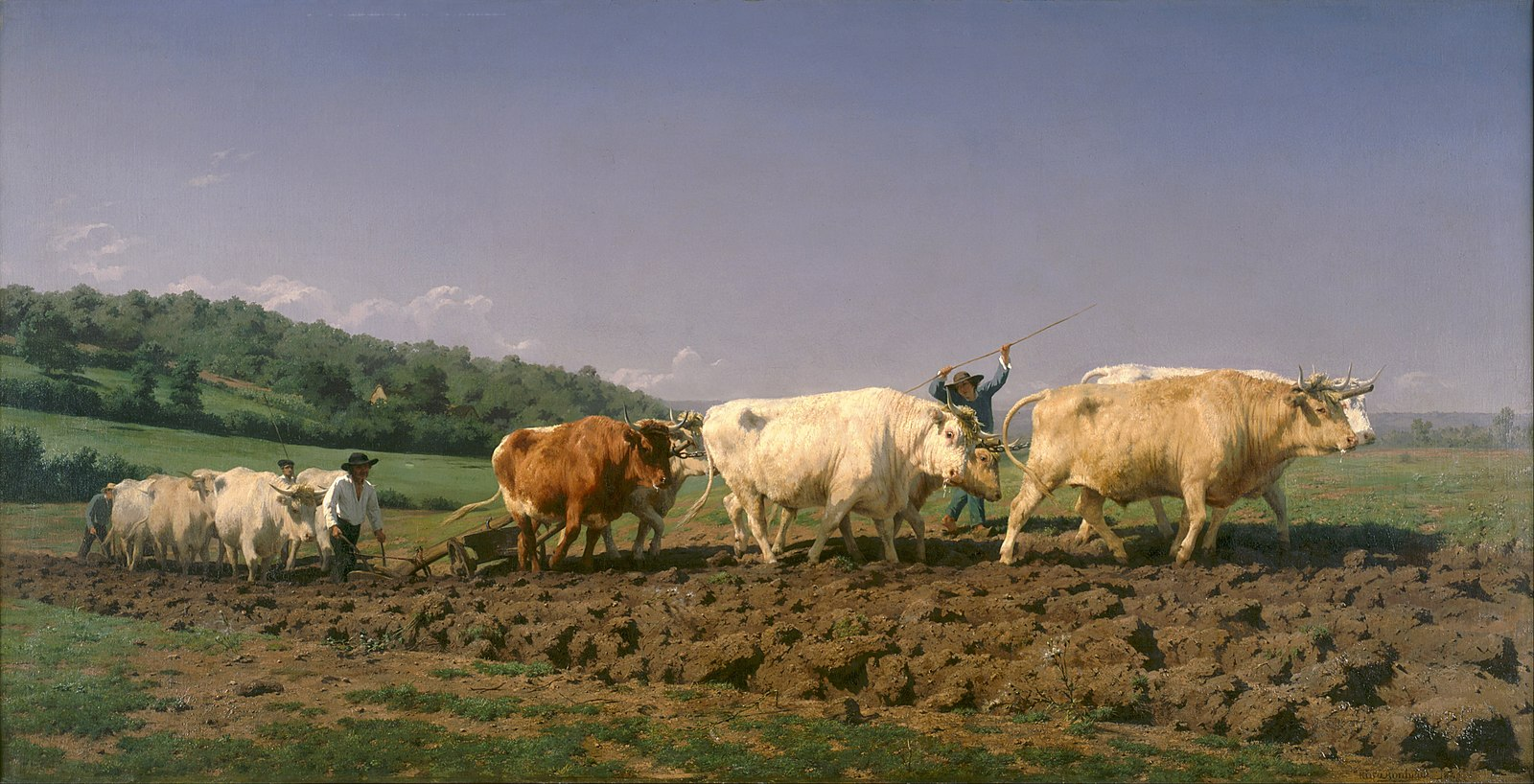

“Ploughing in the Nivernais,” painted in 1849, is widely regarded as one of Rosa Bonheur’s breakthrough works. Commissioned by the French government and first exhibited at the Salon of 1848, this painting depicts a pastoral scene of oxen plowing a field. The work is remarkable for its realistic portrayal of the animals and the serene, almost idyllic, landscape.
Bonheur’s meticulous attention to detail, her deep understanding of animal anatomy, and her ability to capture the tranquil strength of the oxen were particularly praised. The painting’s success established her as a leading figure in the animalière genre and solidified her reputation as an artist of national significance in France. While important, “The Horse Fair” was the true breakthrough that led to international celebrity. As Bonheur began to rise higher in the French art scene, she made an enormous difference for female artists.
Discussion of Her Unique Approach to Studying Animals and Adopting Men’s Attire for Practical Purposes
Bonheur’s approach to studying animals was methodical and immersive. She frequently visited stockyards, farms, and slaughterhouses to observe animals in various settings and states, sketching them in detail.
This direct study was crucial for the accuracy and vitality evident in her animal paintings. Notably, Bonheur often dressed in men’s clothing during these excursions. At the time, it was unconventional and even controversial for a woman to wear trousers, but she did so for practical reasons – to facilitate unencumbered movement in agricultural settings and to avoid drawing attention in predominantly male environments.
This practice was not only a practical choice but also a reflection of her nonconformity to traditional gender roles. Bonheur’s adoption of men’s attire, coupled with her dedication to accurately studying animals, underscores her commitment to her art and her willingness to defy societal norms to pursue her passion.
Major Works and Artistic Style
Rosa Bonheur’s artistic style is characterized by a commitment to realism and a remarkable attention to anatomical accuracy in her animal subjects. Her work reflects a scientific approach to art; she conducted extensive studies of animal anatomy and was known to keep a small menagerie of animals as models.
Bonheur’s realism was not merely technical but also captured the spirit and essence of her subjects, giving her paintings a sense of vitality and authenticity. This dedication to realism and detail made her stand out in the animalière genre and contributed significantly to her success and legacy in the art world. Her style reflects a deep respect and empathy for the natural world, which resonates in her portrayal of both domesticated and wild animals.
Detailed Look at “The Horse Fair” or “Le Marché Aux Chevaux” (1852-1855)
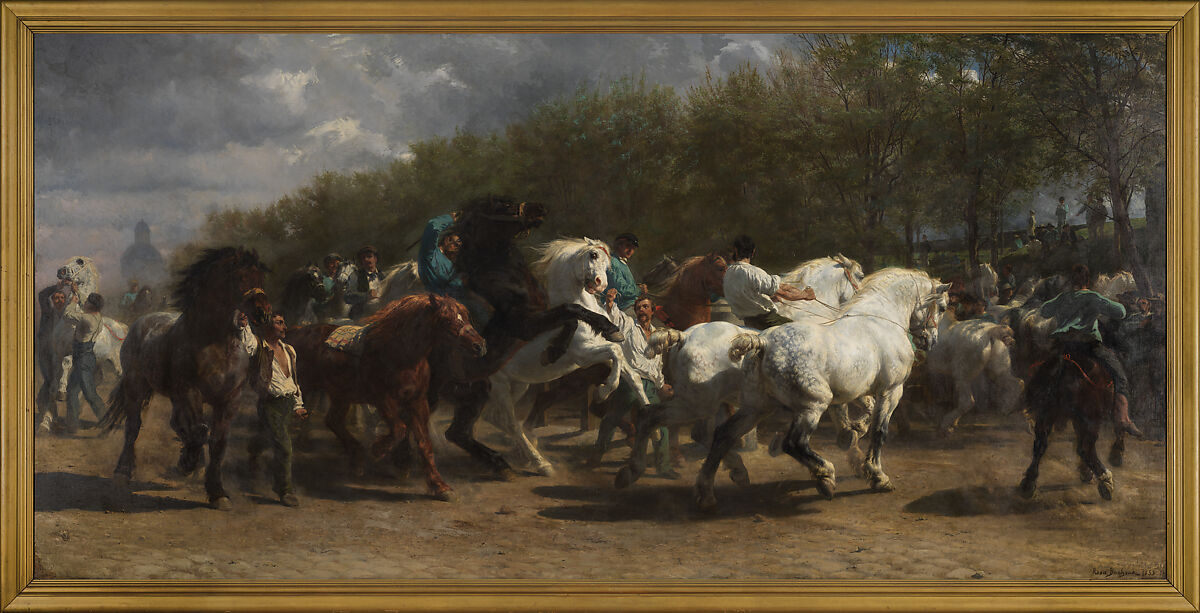

“The Horse Fair,” created between 1852 and 1855, is the most renowned piece Bonheur painted and a masterpiece in the animalière genre. This monumental work, measuring approximately 8 by 16 feet, depicts the horse market held in Paris on the Boulevard de l’Hôpital. The painting stands out for its dynamic portrayal of horses and horse traders, captured in various states of motion and emotion. Bonheur spent over a year and a half studying the subjects for this painting, frequently visiting the horse market to sketch.
She often dressed in men’s clothing during these visits for practicality and to avoid social stigma, as the horse market was predominantly a male environment. “The Horse Fair” was first exhibited at the Paris Salon of 1853 and later in England and the United States, where it received widespread acclaim. It exemplified Bonheur’s mastery of animal anatomy, her skill in capturing movement and energy, and her profound understanding of equine behavior. It was also a sneaky self-portrait. Viewers can see the artist in the center of the painting wearing a teal top.
Examination of Other Notable Works


“Ploughing in the Nivernais” (1849): Commissioned by the French government, this painting portrays a team of oxen plowing a field. It is noted for its tranquil and idyllic representation of rural life. The work demonstrates Bonheur’s attention to detail in the depiction of animals, as well as her appreciation for the pastoral landscape.
“Haymaking in the Auvergne” (1855): This painting depicts agricultural labor in the rural Auvergne region of France. It shows workers engaged in the task of haymaking, set against a lush, verdant landscape. The composition balances human figures, animals, and the natural environment, showcasing Bonheur’s ability to capture the essence of rural life.
“Weaning the Calves” (1879): In this work, Bonheur portrays a scene of calves being separated from their mothers, a common practice in farm life. The painting is noted for its emotional depth, capturing the distress and confusion of the animals, as well as the pastoral setting in which the scene unfolds.
“Sheep by the Sea”: This painting illustrates a flock of sheep grazing near the coast, with the sea in the background. It exemplifies Bonheur’s talent in rendering the texture of animal fur and her skill in landscape painting.
“The Monarch of the Herd”: This artwork features a majestic stag in a forest setting. The painting is a fine example of Bonheur’s ability to portray wildlife with anatomical accuracy and vitality.
“Deer in the Forest”: This painting captures the serene beauty of deer in a natural forest environment. It reflects Bonheur’s keen observation skills and her proficiency in wildlife art.
“The Lion at Home”: This work depicts a lion and lioness resting in a rocky landscape. The painting demonstrates Bonheur’s versatility in depicting a range of animal species and her interest in the behaviors and characteristics of wild animals.
Breaking Gender Barriers
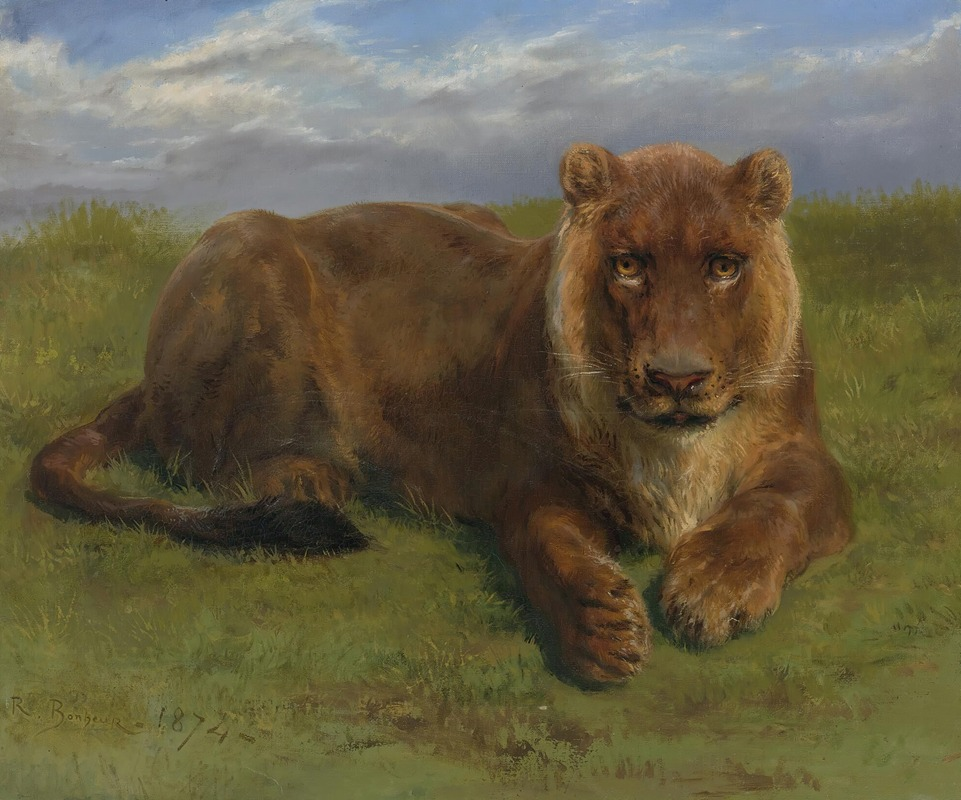

Rosa Bonheur’s life and career were characterized by a remarkable defiance of the rigid gender norms prevalent in the 19th century. At a time when women were largely confined to domestic roles and faced significant restrictions in the professional world, Bonheur carved out a space for herself in the male-dominated field of fine arts.
Her dedication to her career, her choice of subject matter (often considered too ‘masculine’), and her overall approach to her work and public persona were all radical departures from the expected norms for women of her era. Bonheur’s success as a female artist in a field that was not just male-dominated but also often dismissive of women’s contributions was a significant challenge to the gender biases of her time.
Her achievements paved the way for future generations of women artists, demonstrating that gender did not define artistic talent or success. Today, she is celebrated by many as the most famous female painter of the 19th century.
Discussion of Her Choice to Remain Unmarried and Her Relationship with Nathalie Micas
Rosa Bonheur’s personal life was as unconventional as her professional one. She chose to remain unmarried, a rare and bold decision in an era where a woman’s identity and status were largely defined by marriage. Instead, Bonheur shared much of her life with her lifelong companion, Nathalie Micas.
Their relationship, which lasted for over 40 years until Micas’ death, was a significant aspect of Bonheur’s life. While not openly discussed in terms of modern understandings of sexual orientation, their partnership was an integral part of Bonheur’s personal and professional world. The support and companionship of Micas played a crucial role in Bonheur’s career, providing her with the emotional and logistical support necessary to pursue her art.
Exploration of How She Navigated the Male-Dominated Art World and the Significance of Her Wearing Trousers
Navigating the male-dominated art world of the 19th century required Bonheur to adopt unconventional methods. One of her most notable acts of defiance was her choice to wear trousers. At the time, women wearing men’s clothing was socially unacceptable.
This decision was partly practical – trousers allowed her freedom of movement while studying and painting animals – and partly symbolic, challenging the restrictive norms imposed on women’s dress and behavior. Her attire became a symbol of her independence and nonconformity, both in her art and in her life. She was the first female artist to access these spaces in such attire.
By adopting this mode of dress, Bonheur asserted her autonomy and challenged the gendered expectations of her society, further solidifying her status as a trailblazer in the art world and in the broader struggle for women’s rights.
Honors and Recognition
Award of the Legion of Honour by Empress Eugénie in 1865
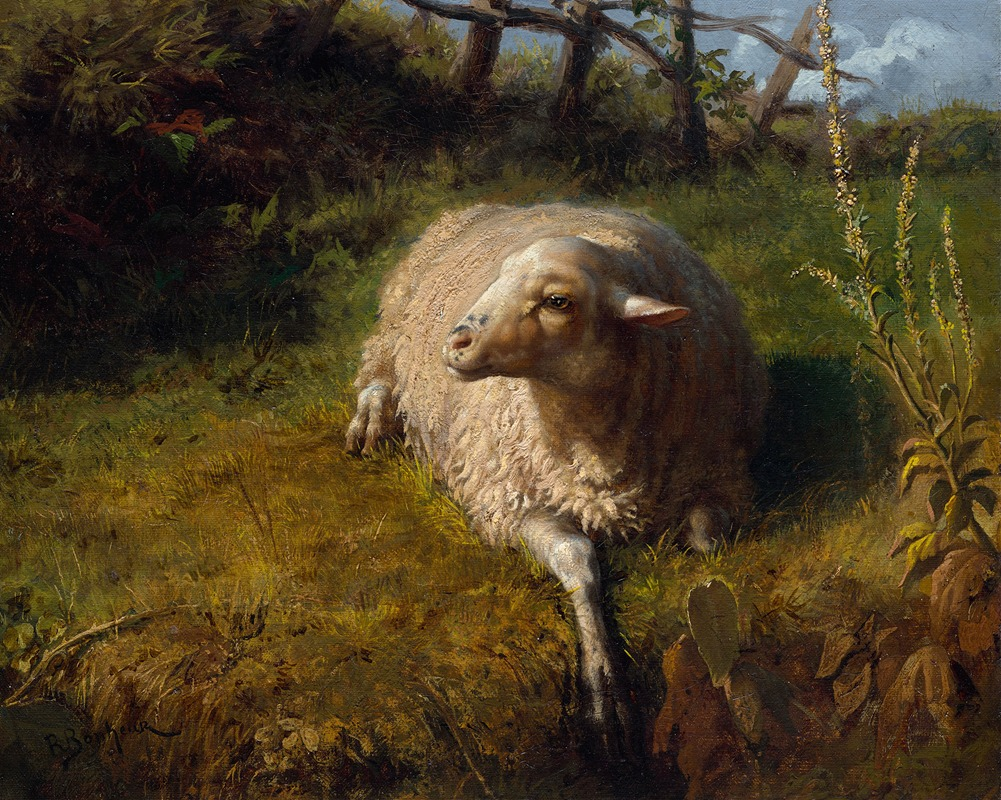

One of the most significant acknowledgments of Rosa Bonheur’s contributions to art came in 1865 when she was awarded the Legion of Honour by Empress Eugénie of France. This recognition was particularly momentous as Bonheur was the first female artist to receive this prestigious award. The Legion of Honour, established by Napoleon Bonaparte, was one of the highest honors in France, and receiving it was not only a recognition of Bonheur’s artistic talent but also a groundbreaking acknowledgment of women’s capabilities in the arts. This accolade was a testament to Bonheur’s status as an exceptional artist in a field dominated by her male counterparts.
Other Awards and Honors Received in Her Lifetime
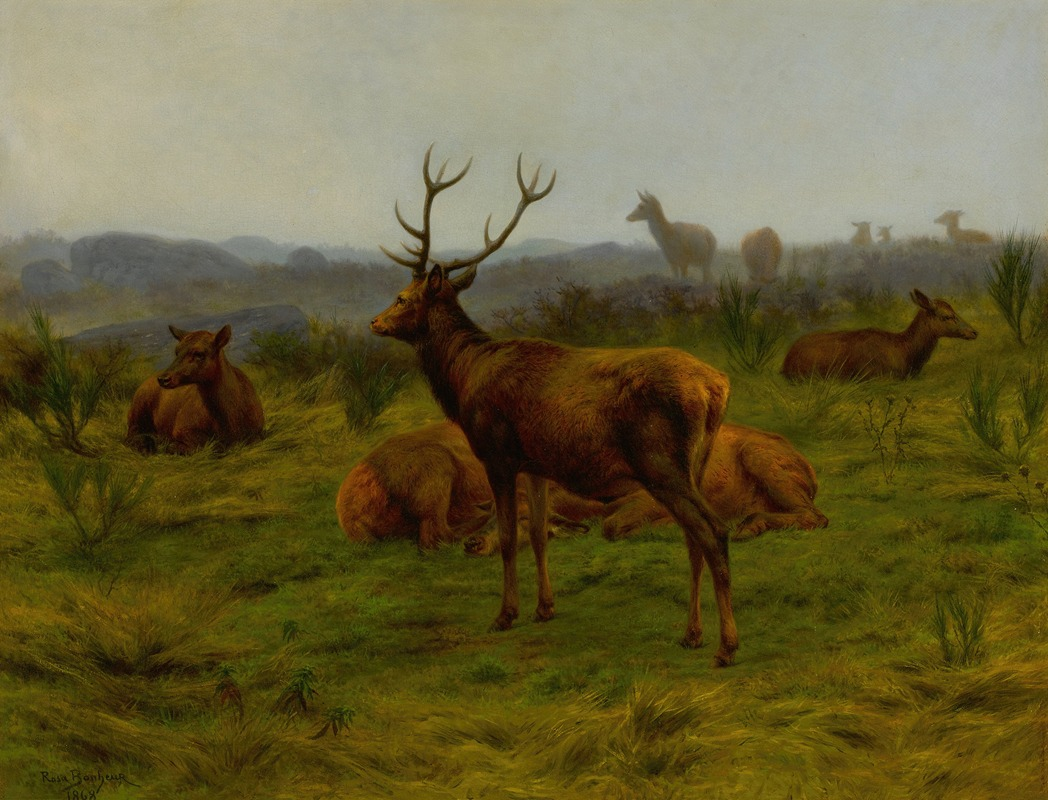

Throughout her career, Rosa Bonheur received numerous other awards and honors, both within France and from the international community. These accolades included various medals and recognitions at exhibitions and salons where her work was displayed. Her art was exhibited and celebrated in countries beyond France, including the United Kingdom and the United States, where she gained considerable admiration. The international acclaim that Bonheur received was indicative of her wide-reaching influence and the universal appeal of her work.
Recognition by Art Societies and Inclusion in Prestigious Exhibitions
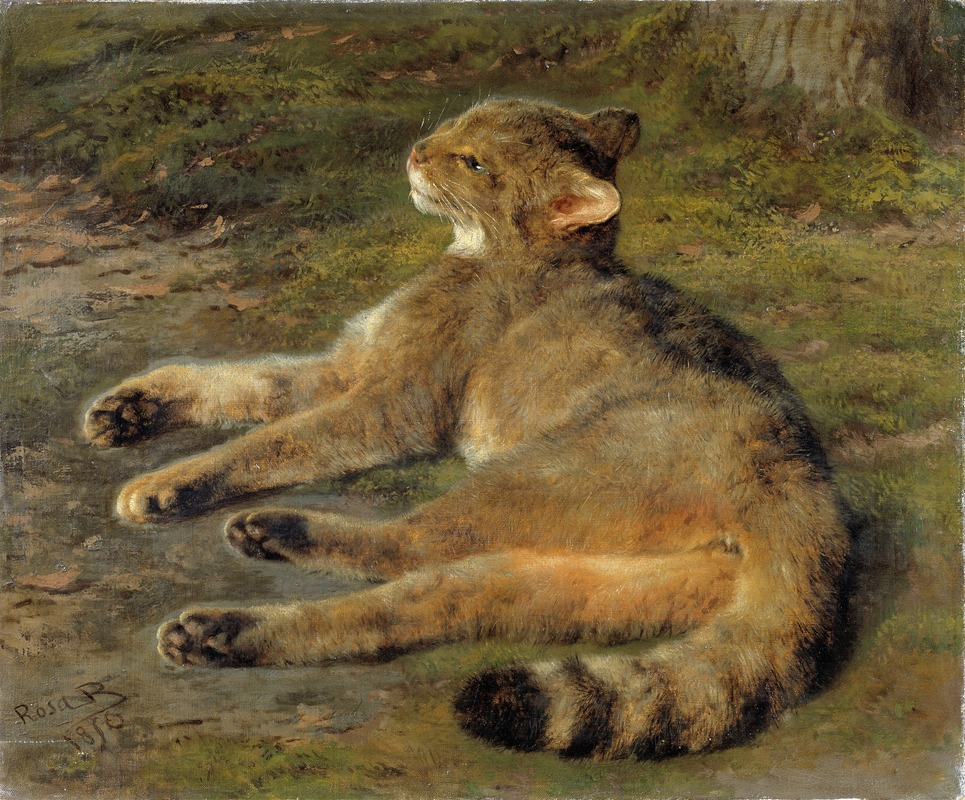

Bonheur’s achievements in the arts were further recognized by various art societies and organizations. She was regularly invited to participate in prestigious exhibitions, a significant honor that underscored her status in the art world. Her participation in these events often placed her alongside the most celebrated artists of her time, highlighting the respect she commanded within the artistic community. These exhibitions not only provided platforms for Bonheur to showcase her work but also reinforced her influence and standing as a leading figure in the world of fine arts. The recognition by these societies and her inclusion in such exhibitions played a crucial role in cementing her legacy in art history.
Recognition from Queen Victoria
When Bonheur’s famous painting “The Horse Fair” was exhibited in England, Queen Victoria, who was an admirer of art and a known lover of horses, was so impressed by the painting that she requested a private viewing. This event took place in 1855, and the gesture was a significant mark of recognition and respect for Bonheur’s work.
While this was not a formal award or decoration, the acknowledgement from Queen Victoria was a substantial honor and a testament to Bonheur’s rising fame and the international acclaim of her work. This recognition by such a prominent and influential figure further elevated Bonheur’s status as an artist and contributed to her growing reputation across Europe.
Bonheur’s Later Years
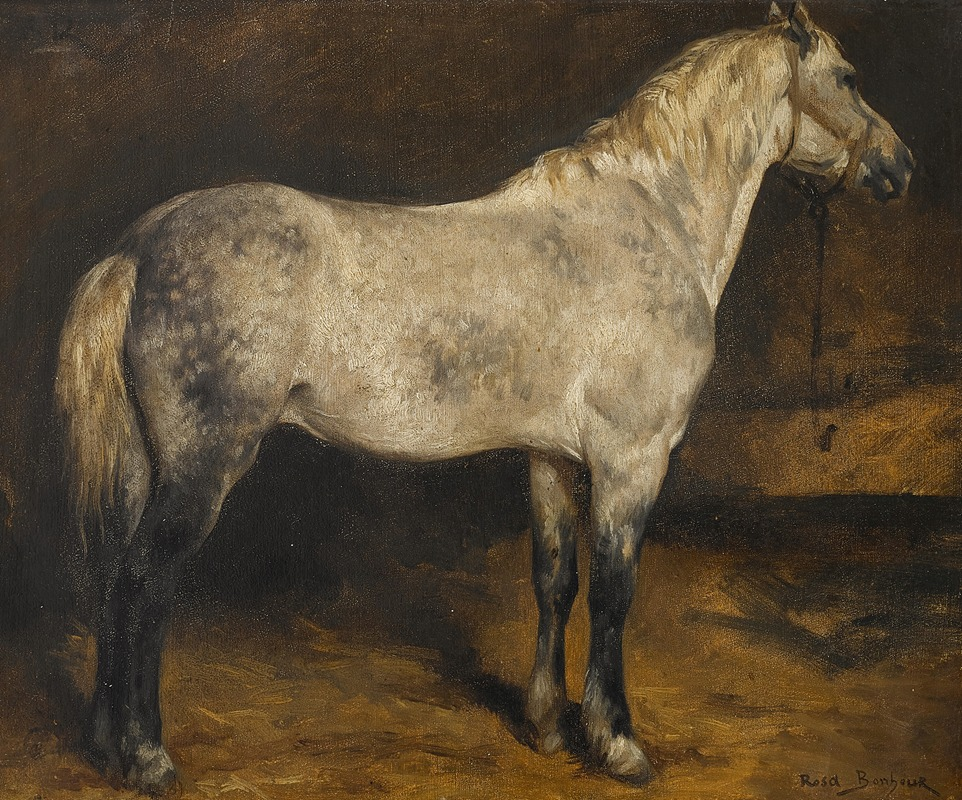

Rosa Bonheur died on May 25, 1899, at the age of 77. She passed away at her residence, Château de By, near Fontainebleau, France. The cause of Bonheur’s death was not widely publicized, but it is known that she had been suffering from health issues in the years leading up to her death.
Bonheur continued to paint and draw throughout her life, although her productivity decreased in her later years due to declining health. She remained passionate about her art and continued to be involved in the artistic community. Her later works continued to reflect her deep connection to and appreciation for the natural world, particularly animals, which had been a lifelong inspiration for her.
Bonheur’s Legacy and Influence


Rosa Bonheur’s extraordinary career left a lasting impact on future generations of women artists. By achieving unprecedented success in a male-dominated field, she paved the way for women seeking to establish themselves in the arts.
Her determination and accomplishment became a source of inspiration, proving that gender should not be a barrier to recognition and success in the art world. Bonheur’s legacy has inspired countless women to pursue their artistic ambitions, breaking traditional gender roles and expanding the presence of women in various art forms.
Her life and work continue to be celebrated for empowering women artists and demonstrating the invaluable contributions they can make to the arts.
Her Contribution to Changing Perceptions of Women in the Art World
Rosa Bonheur played a pivotal role in changing perceptions of women in the art world. Her achievements during the 19th century, a time when women were often relegated to the margins of the artistic community, challenged the prevailing notions of a woman’s place and capabilities in the realm of fine arts.
Her success in the prestigious and traditionally masculine genre of animalière was particularly significant in altering the landscape for women artists. By gaining respect and recognition for her work, Bonheur contributed to a gradual shift in attitudes, encouraging greater acceptance and appreciation of women’s artistic abilities.
Reassessment of Her Work in Contemporary Times and Her Enduring Legacy in Art History
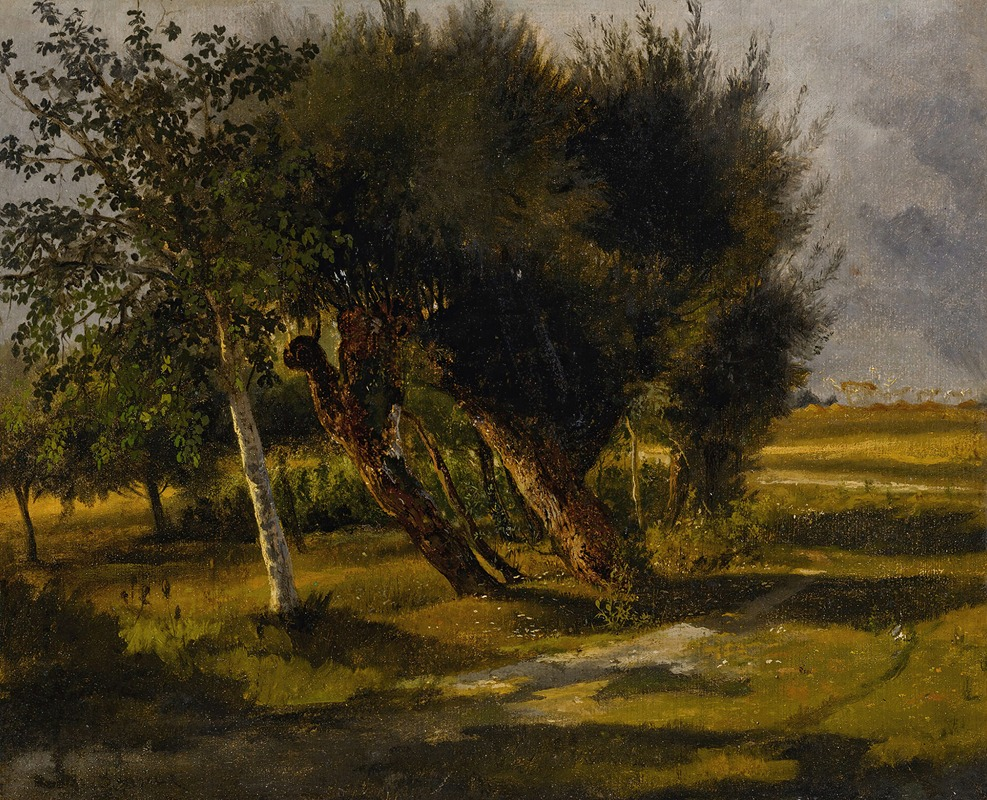

In contemporary times, there has been a reassessment of Rosa Bonheur’s work, bringing renewed attention and appreciation to her artistic achievements. Modern art historians and critics have highlighted not only her technical skill and innovative approach to animal painting but also her role as a trailblazer in the art world.
Today, her paintings are celebrated for their vibrant realism, attention to detail, and emotional depth. Her work is prominently displayed in many American collections, from the Whitney Western Art Museum to the Metropolitan Museum of Art.
Bonheur’s enduring legacy in art history is that of a groundbreaking artist who transcended the limitations of her era to create a lasting impact. Her life and work continue to be studied and admired, serving as a testament to her talent and her significant contributions to the world of art.
Learning More About Marie Rosalie Bonheur Through Her Memoir
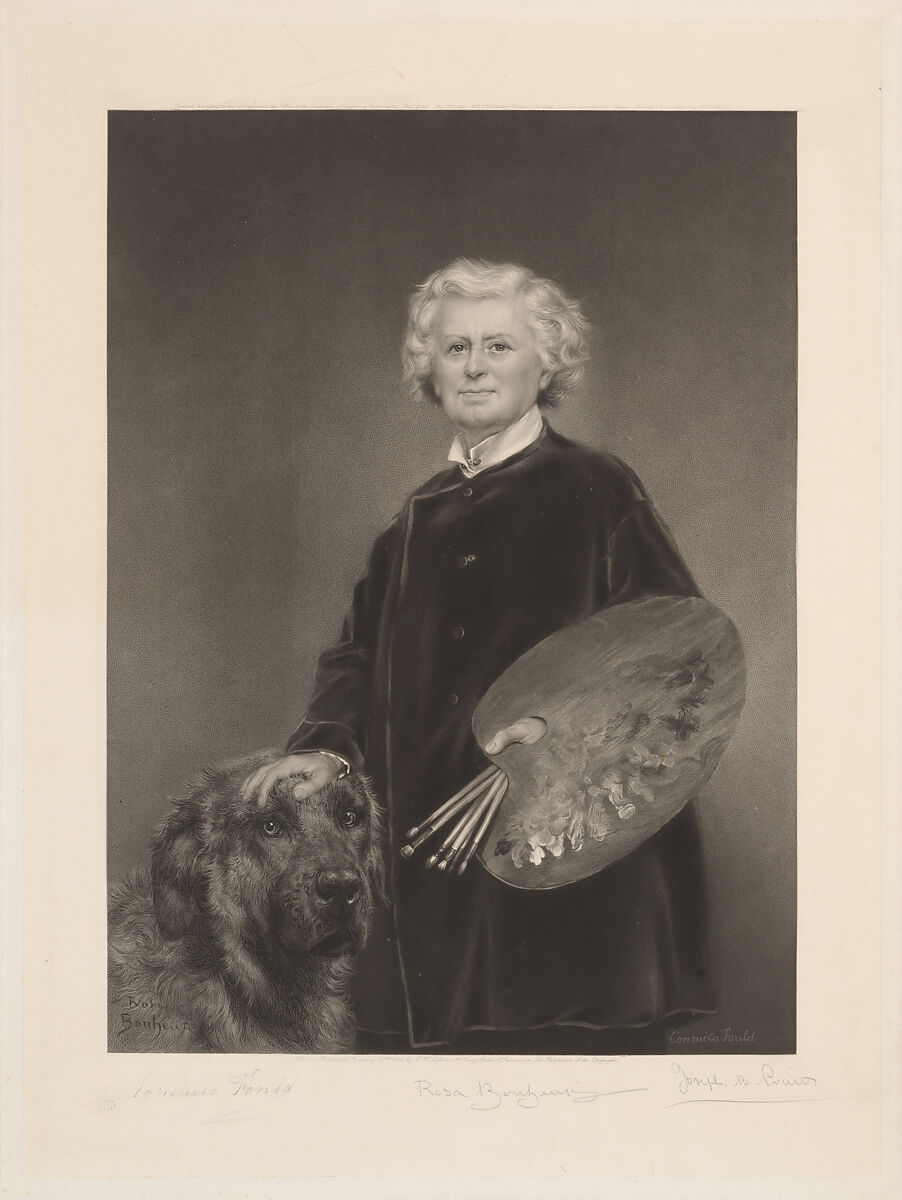

“Rosa Bonheur: The Artist’s (Auto)biography” is a significant work that offers a unique insight into the life and career of the renowned 19th-century French artist. Originally authored by Anna Klumpke, an American painter and Bonheur’s companion in the later years of her life, the biography was initially published in 1909 under the title “Rosa Bonheur: sa vie, son oeuvre” (Rosa Bonheur: Her Life, Her Work).
Anna Klumpke, born in 1856 in San Francisco, was an accomplished artist in her own right and had a profound respect and admiration for Bonheur’s work. The two met later in Bonheur’s life, and Klumpke became not only a close companion but also an artistic collaborator. Their relationship was built on mutual artistic respect and personal affection.
In writing the biography, Klumpke adopted an innovative approach. She wrote the book in the first person, using Bonheur’s voice, effectively creating an (auto)biography. This narrative style gives readers the impression that Bonheur herself is recounting her life story. It provides a personal and intimate portrayal of Bonheur’s experiences, thoughts, and perspectives.
The biography covers various aspects of Bonheur’s life, including her early years, artistic training under her father, her rise to fame, the challenges she faced as a woman in the art world, and her success as a painter specializing in animal subjects. It also delves into her personal life, her beliefs, and her relationships, including her connection with Klumpke.
In 1997, the biography was translated into English by Gretchen Van Slyke, making it more accessible to a broader audience. The translation was titled “Rosa Bonheur: The Artist’s (Auto)biography,” emphasizing the unique first-person narrative style that Klumpke employed.
This work is significant not only for its detailed account of Bonheur’s life and career but also for its unique approach to biographical writing. It offers invaluable insights into the mind and experiences of one of the most influential female artists of the 19th century, as well as a glimpse into the era’s cultural and social milieu. For those interested in art history, women’s history, and the study of autobiography, Klumpke’s biography of Rosa Bonheur stands as a compelling and informative resource.
Final Thoughts About the Life and Legacy of Rosa Bonheur
Rosa Bonheur’s remarkable journey through the art world of the 19th century stands as a testament to her role as a trailblazer in both art and society. Her defiance of gender norms and her exceptional skill in the animalière genre not only carved a niche for her in the annals of art history but also laid the groundwork for future generations of women artists.
Bonheur’s enduring influence is evident in her elevation of animal painting to a respected art form and in her pioneering efforts to champion the place of women in the art world. Her life and work remain significant, not just as historical artifacts, but as enduring sources of inspiration, symbolizing the power of talent and determination to transcend societal boundaries.
Rosa Bonheur’s legacy continues to resonate, inspiring artists and art enthusiasts alike, and reaffirming her status as one of the most influential and groundbreaking artists of her time.







